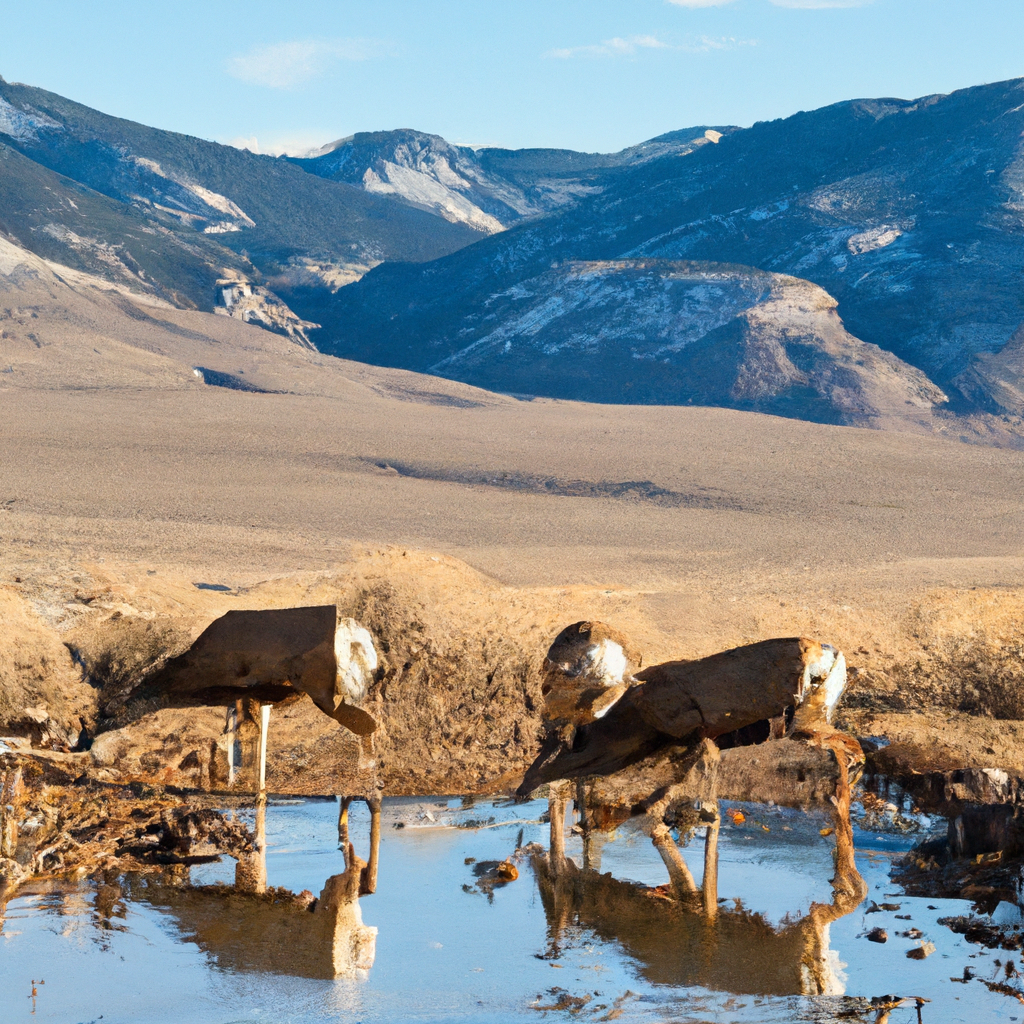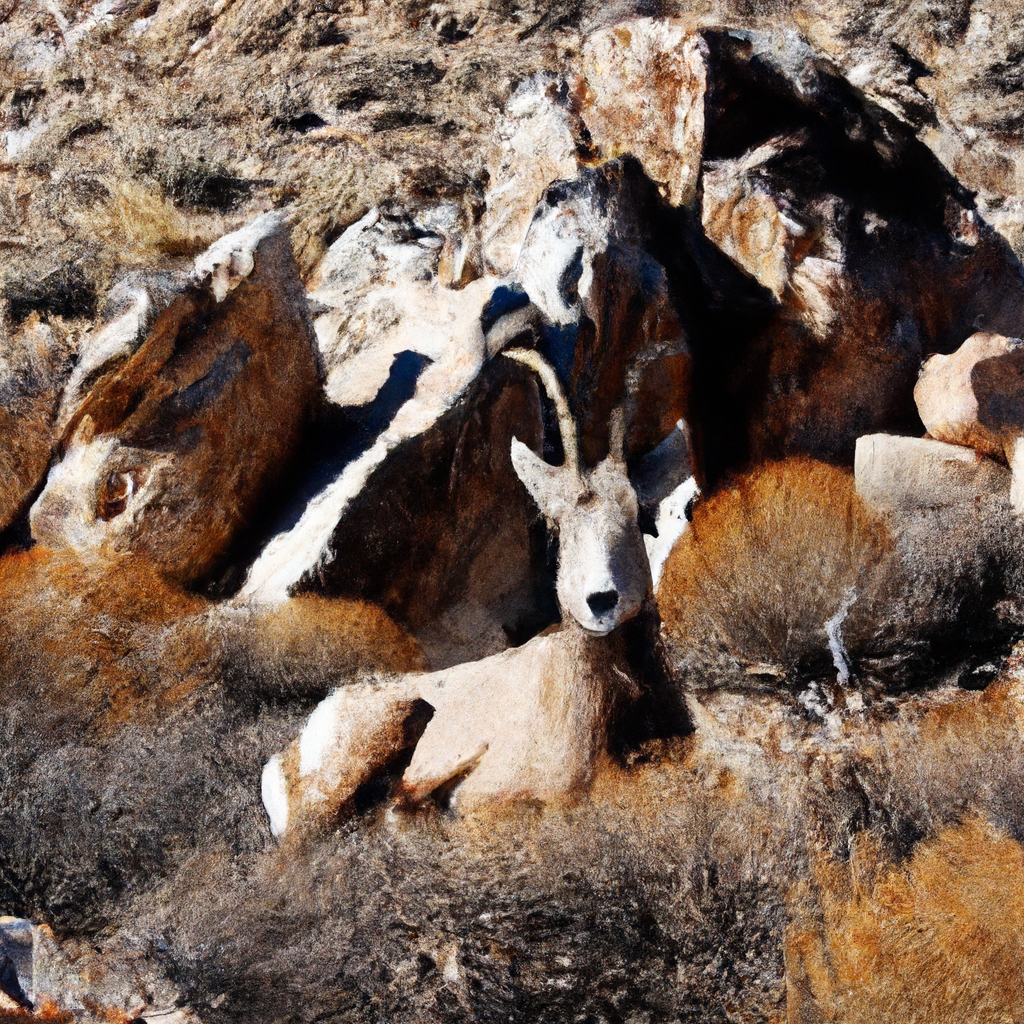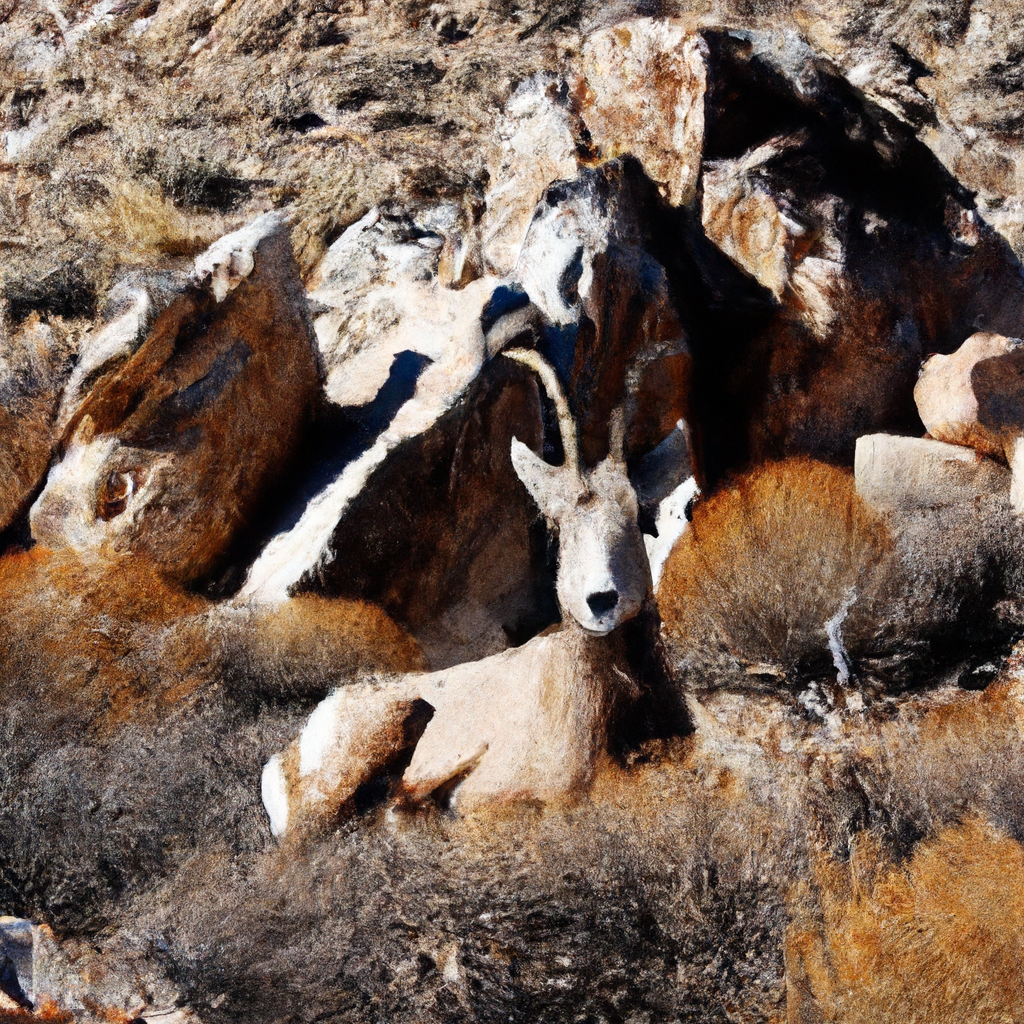Nevada̵7;s hot springs are not only a soothing escape from the hustle and bustle of daily life, but they also offer a fascinating glimpse into the wildlife that thrives in these unique habitats. As you soak in the warm, healing waters, you may find yourself sharing the space with curious raccoons, playful otters, or even majestic birds of prey. From the delicate dance of dragonflies to the stealthy movements of bobcats, the wildlife that surrounds these hot springs adds an extra layer of magic to your experience. So, whether you’re seeking relaxation or a closer connection with nature, exploring Nevada’s hot springs promises to invigorate your body and soul while introducing you to the vibrant wildlife that calls this rugged landscape home.

Nevada’s Hot Springs
Nevada is home to a wealth of natural hot springs that offer a unique and therapeutic experience for visitors. These hot springs not only provide a relaxing escape from the hustle and bustle of everyday life but also offer a range of health benefits. The mineral-rich waters found in these hot springs have long been believed to possess healing properties that can invigorate both the body and the soul.
Wildlife around Nevada’s Hot Springs
The hot springs of Nevada are not only a sanctuary for relaxation but also serve as an important habitat for a diverse range of wildlife. The surrounding ecosystems are teeming with various species, making it a haven for nature enthusiasts and wildlife lovers. From mammals to avian species, reptiles, and amphibians, all forms of life find a home in these unique and thriving environments.
Diverse and Unique Ecosystems
Nevada’s hot springs harbor a wide array of ecosystems, each with its own unique characteristics. From the arid deserts to lush oases, these hot springs create a microcosm of life rarely seen elsewhere. The diverse ecosystems provide a rich tapestry of habitats, allowing different species to thrive and coexist in harmony.
Mammals
Nevada’s hot springs attract several fascinating mammal species. One of the most iconic residents is the Bighorn Sheep, known for its majestic horns and ability to navigate the rugged mountainous terrain. Mule Deer, with their graceful leaps, can often be spotted near the water’s edge, finding solace in the lush vegetation. Mountain Lions, elusive and stealthy, roam the surrounding areas, hunting for prey. Coyotes and Bobcats, on the other hand, are skilled predators, often seen venturing close to the hot springs in search of food and water.
Avian Species
The hot springs of Nevada are a haven for avian species, attracting an impressive range of birds. Waterfowl such as ducks and geese are a common sight, gracefully gliding across the calm surface of the hot spring pools. Birds of prey, including eagles and hawks, can be observed soaring high above, surveying their surroundings for potential meals. The melodic tunes of songbirds fill the air, their melodies blending harmoniously with the tranquil ambiance of the hot springs.
Reptiles and Amphibians
Nevada’s hot springs provide a suitable habitat for a variety of reptiles and amphibians. Rattlesnakes, though venomous, play an essential role in the ecosystem, helping to control rodent populations. Turtles are also frequent visitors to the hot springs, often seen basking in the warm sunlight near the water’s edge. Lizards, with their remarkable ability to blend into their surroundings, scuttle across the rocky terrain, while frogs fill the night with their chorus of croaks, adding to the enchanting atmosphere.
Fish
The mineral-rich waters of Nevada’s hot springs support a diverse and unique fish population. Endemic fish species, found exclusively in these hot springs, have evolved to withstand the varying temperatures and mineral composition of the water. Visitors may encounter a variety of trout species, each displaying its own vibrant colors and patterns. These fish species have adapted to thrive in this specialized habitat, making the hot springs a true sanctuary for their survival.
Insects and Arachnids
While often overlooked, insects and arachnids play a crucial role in the ecosystem surrounding Nevada’s hot springs. Dragonflies, with their iridescent wings, flutter gracefully above the water’s surface, adding a touch of color to the landscape. Butterflies, delicate and graceful, dance from flower to flower, pollinating and spreading beauty. Spiders, intricate weavers of webs, contribute to the delicate balance of the ecosystem by controlling insect populations.
Hot Springs and Wildlife Conservation
Recognizing the importance of preserving Nevada’s hot springs and the abundance of wildlife that rely on them, conservation efforts have been implemented to maintain biodiversity and ensure the survival of these unique habitats.
Preserving Biodiversity
The preservation of biodiversity in Nevada’s hot springs is of utmost importance. By safeguarding the various ecosystems, we can protect the diverse range of species that call these hot springs home. This involves implementing sustainable practices that minimize the impact of human activities and promote the natural functioning of the ecosystem.
Wildlife Management Initiatives
To maintain healthy wildlife populations, various wildlife management initiatives have been put in place. These initiatives involve careful monitoring of species populations, habitat restoration projects, and the implementation of conservation programs. By actively managing and protecting wildlife, we can ensure the long-term sustainability of their habitats in the hot springs.
Responsible Tourism
As visitors, it is crucial that we engage in responsible tourism practices when enjoying Nevada’s hot springs. Respecting the natural environment, following designated trails, and refraining from littering or disturbing wildlife are essential components of responsible tourism. By being mindful of our actions, we can minimize our impact on these delicate ecosystems and help preserve them for future generations.
Hot Springs as Habitats
Hot springs provide vital habitats for a wide range of species, offering a unique combination of water sources and thermal/geothermal features that support life in a myriad of ways.
The Importance of Water Sources
Water is a precious resource in Nevada’s arid landscapes, and hot springs act as invaluable water sources for both wildlife and plants. By providing a consistent supply of clean water, hot springs sustain life in even the most challenging environments, ensuring the survival of both aquatic and terrestrial species.
Thermal and Geothermal Features
The thermal and geothermal features of hot springs create a habitat unlike any other. The warm waters and geothermal activity create a microclimate that supports a diverse range of species adapted to these unique conditions. From specialized bacteria to heat-tolerant plants, the thermal features of hot springs offer a haven for life that thrives in extreme temperatures.

Hot Springs and Mammals
Nevada’s hot springs attract a variety of mammal species, each adapted to the specific challenges presented by these geothermal environments.
Bighorn Sheep
Bighorn Sheep, with their impressive horns and remarkable agility, are well-suited for the rugged terrain surrounding the hot springs. These magnificent creatures can often be spotted gracefully navigating the steep cliffs and rocky slopes, finding solace in the mineral-rich waters that provide both sustenance and relief from the desert heat.
Mule Deer
Mule Deer frequent the areas surrounding the hot springs, drawn to the lush vegetation and reliable water sources. These graceful creatures, known for their large ears and impressive leaps, rely on the hot springs to survive in Nevada’s challenging desert landscapes.
Mountain Lions
Mountain Lions, also known as cougars or pumas, are elusive predators that call Nevada’s hot springs home. These solitary and stealthy creatures are highly adaptable and have mastered the art of hunting in various terrains. The hot springs offer them a reliable source of water and attract prey species, making them an ideal habitat for these majestic predators.
Coyotes
Coyotes, renowned for their intelligence and adaptability, are a common presence near Nevada’s hot springs. These resourceful animals are skilled hunters and scavengers, and the hot springs offer them both water and a diverse range of food sources. Their haunting calls can often be heard echoing through the desert landscapes, adding to the mystique of these natural oases.
Bobcats
Bobcats, with their tufted ears and distinctive markings, are well-suited to the arid environments surrounding Nevada’s hot springs. These elusive felines are skilled hunters, preying on small mammals that thrive in the hot spring ecosystems. Their presence adds an air of mystery to these already enchanting landscapes.
Hot Springs and Avian Species
Nevada’s hot springs attract a plethora of bird species, offering them a reliable food source and a place to rest and replenish their energy during their migratory journeys.
Waterfowl
Waterfowl are a common sight around Nevada’s hot springs, gracefully gliding across the serene surfaces of the pools. Ducks, geese, and swans can often be observed paddling, diving, and foraging for vegetation. These water-loving birds find sanctuary and nourishment in the hot springs, making them an integral part of this unique ecosystem.
Birds of Prey
Nevada’s hot springs provide crucial resting spots and hunting grounds for a diverse range of birds of prey. Eagles, hawks, and owls majestically soar above the hot springs, using their acute vision to spot prey from great distances. These awe-inspiring creatures contribute to the delicate balance of the ecosystem by controlling rodent populations and ensuring the health and vitality of the surrounding habitats.
Songbirds
The tranquil ambiance of Nevada’s hot springs is further enhanced by the delightful melodies of songbirds. These small, colorful birds fill the air with their melodious tunes, adding a symphony of sound to the natural symphony of the hot springs. Their presence serves as a reminder of the rich biodiversity found within these precious habitats.

Hot Springs and Reptiles/Amphibians
Nevada’s hot springs provide shelter and sustenance for a variety of reptiles and amphibians, each playing a vital role in the ecosystem.
Rattlesnakes
Rattlesnakes, though often feared, are an integral part of Nevada’s hot spring ecosystems. These venomous serpents help control rodent populations, contributing to the delicate balance of the food chain. Their ability to survive and thrive in the challenging desert environments is a testament to their remarkable adaptations.
Turtles
Turtles are frequent visitors to Nevada’s hot springs, basking in the warm sunlight and seeking refuge in the cool waters. These ancient creatures have existed for millions of years and are a symbol of longevity and resilience. The hot springs provide them with the perfect habitat, allowing them to maintain their body temperature and find an abundant supply of food.
Lizards
Lizards scuttle across the rocky landscapes surrounding Nevada’s hot springs, utilizing their remarkable camouflaging abilities to blend seamlessly into their surroundings. From swift and agile geckos to larger, spiny-bodied lizards, these reptiles are well-adapted to the arid environments surrounding the hot springs. They play an essential role in maintaining the delicate balance of the ecosystem by controlling insect populations and serving as a source of food for larger predators.
Frogs
Frogs add a touch of enchantment to Nevada’s hot springs, their melodic croaks filling the night air. These amphibians rely on the hot springs for breeding and as a source of water during the arid months. Their presence serves as a testament to the vibrancy and resilience of these unique ecosystems.
Hot Springs and Fish
Nevada’s hot springs are home to a diverse array of fish species, each adapted to the specific conditions of the thermal waters.
Endemic Fish Species
The mineral-rich waters of the hot springs support several endemic fish species, which are found exclusively in these unique habitats. These fish have evolved over time to thrive in the varying temperatures and mineral compositions of the water. Their ability to survive in such specialized conditions adds to the allure and importance of Nevada’s hot springs.
Trout Varieties
Trout, with their vibrant colors and streamlined bodies, are a common sight in Nevada’s hot springs. While various trout species can be found, each displaying its unique patterns and adaptations, they all share a reliance on the hot springs for survival. These fish find refuge in the cooler waters surrounding the thermal features, taking advantage of the abundant food sources and security the hot springs provide.

Hot Springs and Insects/Arachnids
Though small in size, insects and arachnids play an essential role in the ecosystems surrounding Nevada’s hot springs.
Dragonflies
Dragonflies, with their iridescent wings and graceful flight, add a touch of natural beauty to the hot spring landscapes. These insects are predatory, feeding on smaller insects, and are often seen hovering near the water’s surface. Their presence is a testament to the abundance of life that thrives within these natural oases.
Butterflies
Butterflies, delicate and vibrant, are a common sight in the hot spring environments of Nevada. These winged wonders play a vital role in pollination, ensuring the continued growth and reproduction of various plant species. As they flit from flower to flower, their presence adds color and life to the already stunning landscapes of the hot springs.
Spiders
Spiders, skilled weavers of intricate webs, contribute to the delicate balance of the ecosystem surrounding Nevada’s hot springs. While some may find them intimidating, these arachnids are crucial for controlling insect populations. By maintaining the balance of prey and predator, spiders help ensure the overall health of the ecosystem.
Preserving Nevada’s Hot Springs and Wildlife
Protecting the natural wonders of Nevada’s hot springs and the diverse wildlife they support requires the positive involvement of both the local community and conservation organizations.
Community Involvement
The local community plays a vital role in preserving Nevada’s hot springs and the wildlife that depends on them. By actively engaging in sustainable practices, such as minimizing pollution, adhering to designated trails, and promoting responsible tourism, community members can ensure the long-term integrity of these unique habitats.
Conservation Organizations
Various conservation organizations are dedicated to the protection and preservation of Nevada’s hot springs and the wildlife that thrives within them. These organizations work tirelessly to raise awareness, implement conservation initiatives, and advocate for the sustainable management of these precious resources. Through their efforts, they ensure the longevity and well-being of the hot springs and the diverse range of species they harbor.
Educational Programs
Educational programs play a crucial role in spreading awareness and understanding of the importance of preserving Nevada’s hot springs and wildlife. By educating the public, particularly the younger generations, about the unique ecosystems and the threats they face, these programs inspire a sense of responsibility and stewardship. Through education, we can foster a deep appreciation for the natural world and instill a desire to protect these valuable resources.
In conclusion, Nevada’s hot springs offer not only a soothing retreat for relaxation and healing but also serve as vital habitats for a diverse range of wildlife. From mammals to avian species, reptiles, and amphibians, hot springs provide a sanctuary for a variety of species, each playing a crucial role in the delicate balance of the ecosystem. It is our collective responsibility to preserve and protect these natural wonders, ensuring their continued existence for future generations to enjoy.

